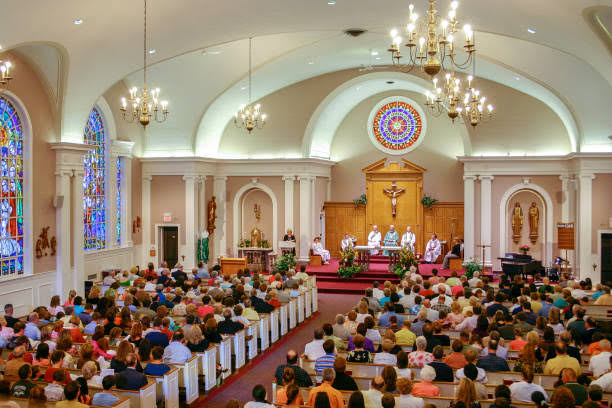Special Features
Top 10 Nations with most churches in 2024

In this article, News360 Nigeria enumerates top 10 nations with the highest number of churches in 2024.
The spread of Christianity worldwide has led to the formation of numerous churches across different nations, reflecting its status as one of the most practiced religions globally.
Over centuries, through preaching and evangelism, the Christian faith has transcended cultural, geographical, and racial boundaries.
This global expansion is largely due to missionary activities, religious movements, colonial influence, and individual conversions.
The increasing number of churches highlights Christianity’s adaptability to various local cultures while staying true to its core beliefs.
Consequently, churches not only function as spiritual centers but also serve as community hubs, fostering both religious and social bonds across continents.
When considering the expression of faith, places of worship hold immense significance. Churches, in particular, play a vital role in the spiritual lives of millions worldwide.
These sacred spaces provide more than just a venue for worship; they stand as pillars of community life, offering education and social support.
As Christianity continues to thrive, some countries are especially notable for their vast number of churches, reflecting the deeply embedded role of faith in their societies.
This article explores the top 10 countries with the most churches, examining the historical, cultural, and social influences behind their growth.
1. United States
The U.S. takes the lead with over 360,000 churches across various Christian denominations, reflecting the country’s diversity in religious practices.
Christianity’s deep roots in American culture, particularly Protestantism, have contributed to the high number of churches.
2. Brazil
Brazil, with its large Evangelical and Catholic communities, boasts a significant number of churches, showcasing the strong Christian influence in the country.
The church plays a central role in Brazilian culture, community gatherings, and national celebrations.
3. Vatican City
Despite its small size, Vatican City holds a special place on this list, being the heart of Catholicism.
With around 1,700 churches, the city has one of the highest numbers of churches per capita, representing its status as a religious hub.
4. Poland
Poland, with over 10,000 churches, remains one of the most devout Catholic nations in Europe.
Its long history of Catholicism is evident in the number of places of worship that dot the country, from small chapels to grand cathedrals.
5. Rwanda
Known as “the Jerusalem of Africa,” Rwanda has a rapidly growing Christian population, and churches play a central role in social and community life.
With its high number of churches, Rwanda stands out as a testament to Christianity’s stronghold in Africa.
6. Malawi
With about 10,000 churches, Malawi has one of the highest numbers of churches per capita on the African continent. Christianity, predominantly Protestantism, continues to thrive and expand in this country.
7. Angola
Approximately 95% of Angola’s population identifies as Christian, which has resulted in a considerable number of churches throughout the country.
The church serves not only as a place of worship but also as a foundation for social and cultural activities.
8. Romania
Romania’s deep-rooted Orthodox Christian faith is reflected in the country’s approximately 1,800 churches. The country is home to some of the most historic and beautiful Orthodox churches in Europe.
9. Italy
With its rich Catholic heritage, Italy naturally ranks high with its numerous churches, many of which hold significant historical and architectural value.
Churches in Italy are both places of worship and cultural landmarks, attracting millions of visitors annually.
10. Spain
Spain’s Catholic tradition has resulted in the proliferation of churches throughout the country.
These religious spaces have played key roles in Spanish history, shaping the nation’s political and social landscapes.





















